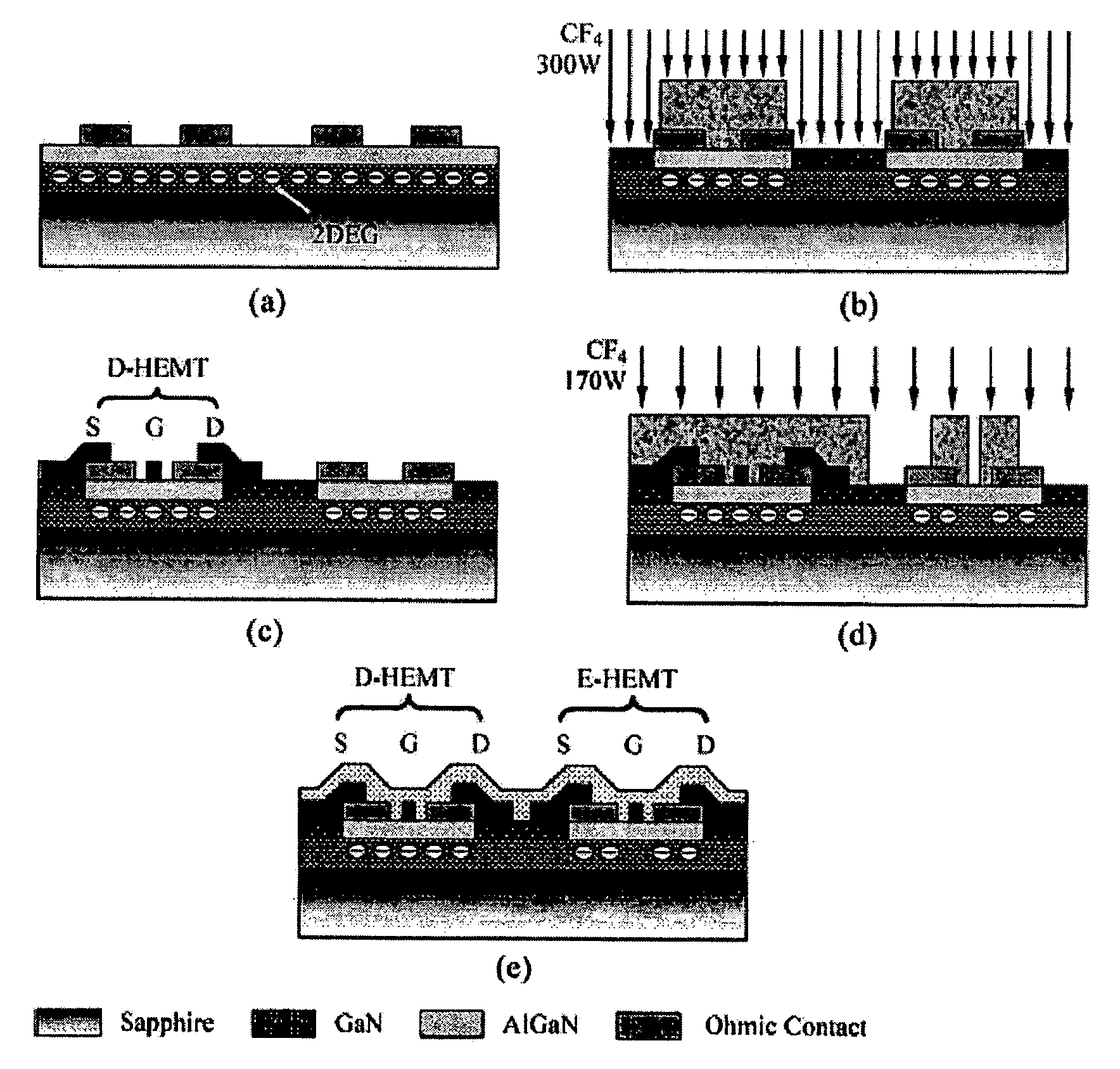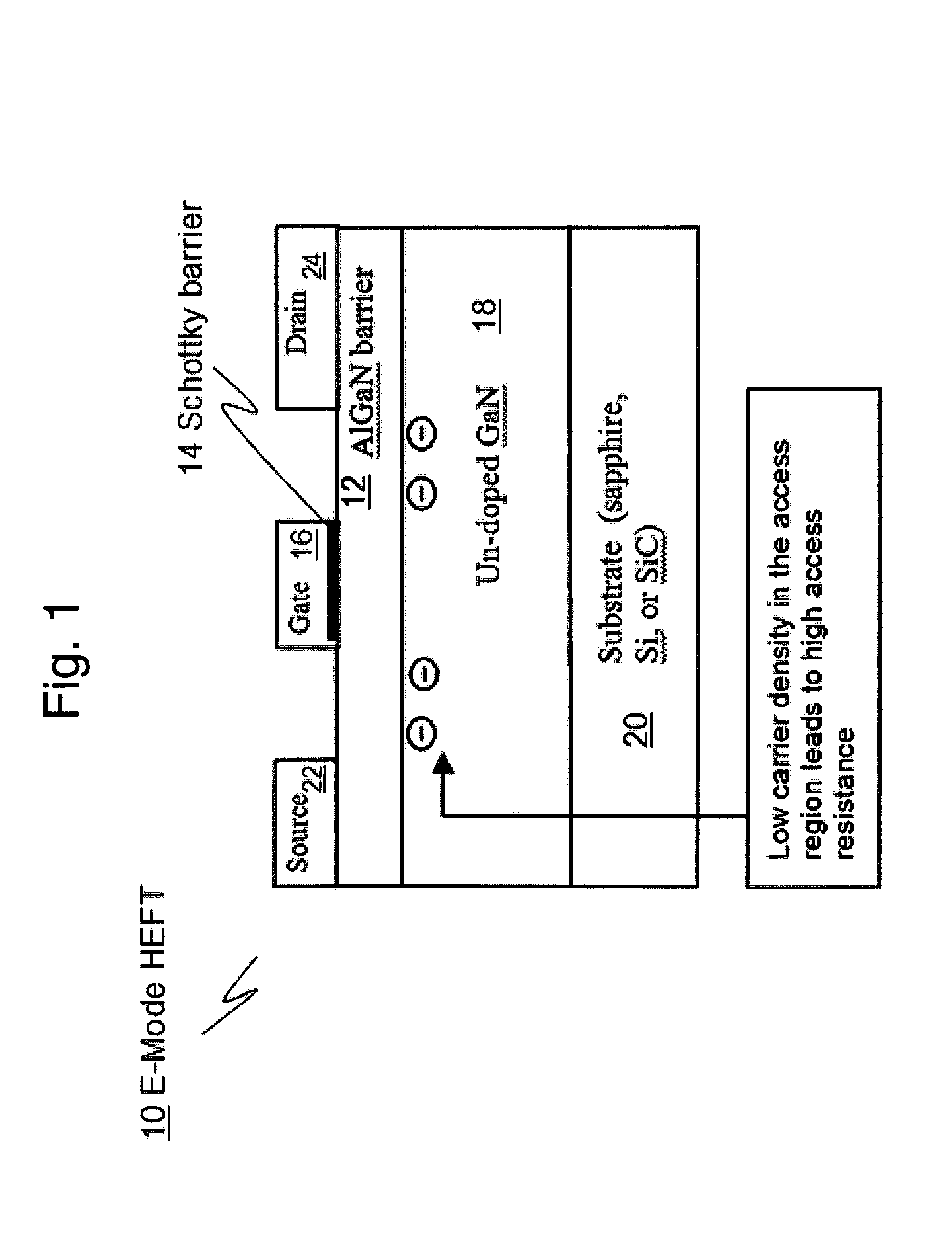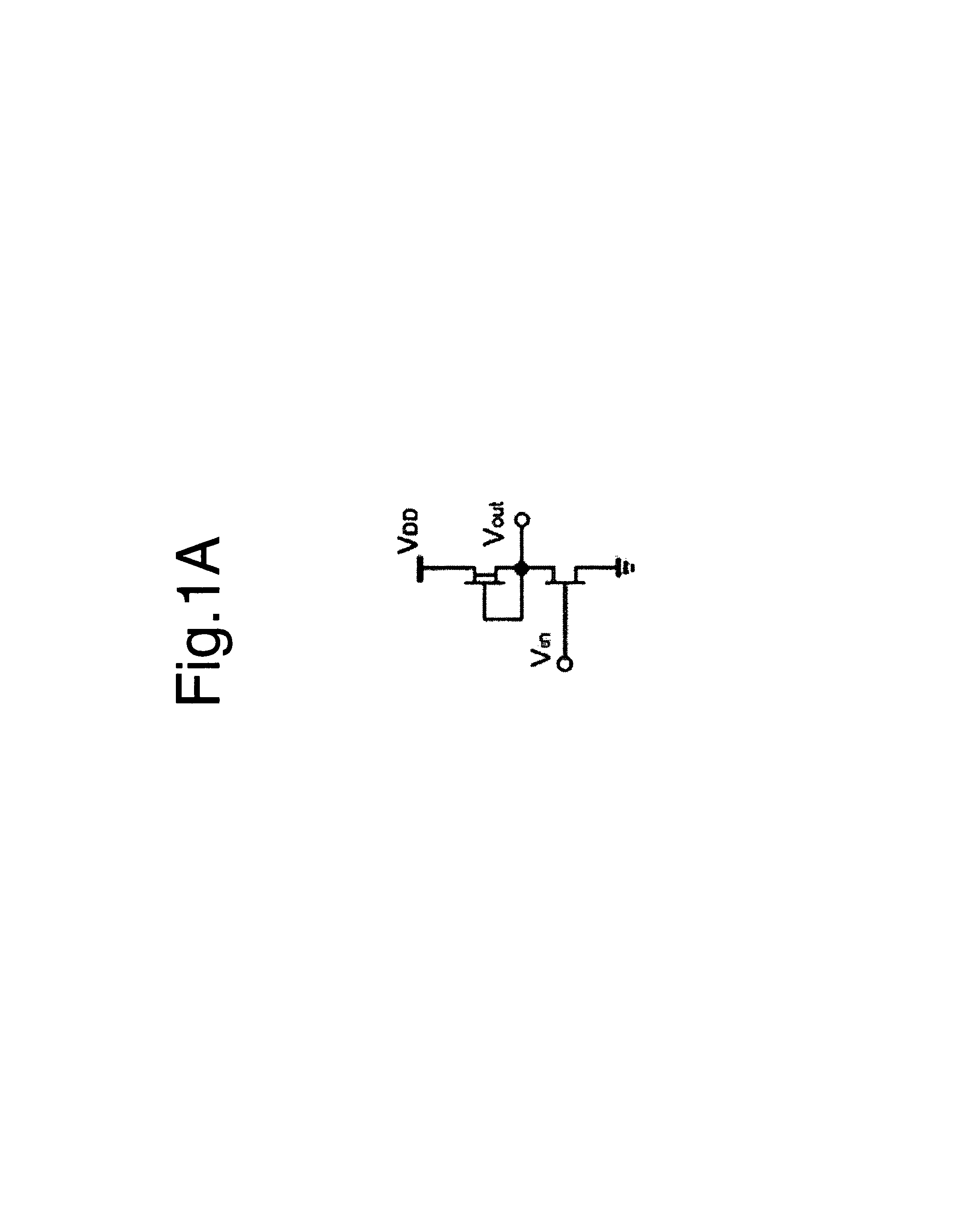Monolithic integration of enhancement- and depletion-mode AlGaN/GaN HFETs
a heterojunction field effect transistor and enhancement-depletion-mode technology, applied in the direction of transistors, semiconductor devices, electrical apparatus, etc., can solve the problems of poor performance characteristics of e-mode hfets fabricated in this manner, low transconductance, large on-resistance, etc., to achieve low knee-voltage, low extrinsic transconductance, and low on-resistance
- Summary
- Abstract
- Description
- Claims
- Application Information
AI Technical Summary
Benefits of technology
Problems solved by technology
Method used
Image
Examples
example 1
An AlGaN / GaN HEMT structure was grown on a (0001) sapphire substrate in an Aixtron AIX 2000 HT metal-organic chemical vapor deposition (MOCVD) system. The HEMT structure consists of a low-temperature GaN nucleation layer, a 2.5-m-thick unintentionally doped GaN buffer layer and an AlGaN barrier layer with nominal 30% Al composition. The barrier layer consists of a 3-nm undoped spacer, a 15-nm carrier supplier layer doped at 2.5×1018 cm−3, and a 2-nm undoped cap layer. Room temperature Hall measurements of the structure yield an electron sheet density of 1.3×1013 cm−2 and an electron mobility of 1000 cm2 / Vs. The device mesa was formed using Cl2 / He plasma dry etching in an STS ICP-RIE system followed by the source / drain ohmic contact formation with Ti / Al / Ni / Au annealed at 850° C. for 45 seconds. The ohmic contact resistance was typically measured to be 0.8 ohm-mm.
After gate windows with 1 nm length were opened by contact photolithography, the sample was treated by CF4 plasma in an RIE...
example
DCFL Ring Oscillator
FIG. 1B shows a schematic circuit diagram of a DCFL ring oscillator, which is formed with an odd-numbered E / D inverter chain. Seventeen-stage ring oscillators were fabricated with inverters' β=6.7, 10, and 25. For each ring oscillator, 36 transistors were used including an output buffer. FIG 1D shows a photomicrograph of a fabricated ring oscillator according to the present innovations. The ring oscillator were characterized on-wafer using an Agilent E4404B spectrum analyzer and an HP 54522A oscilloscope. The DC power consumption was also measured during the ring oscillators' operation. FIGS. 44 and 45 show the frequency- and time-domain characteristics of the 17-stage ring oscillator with β=10 biased at VDD=3.5 V. The fundamental oscillation frequency is 225 MHz. According to the formula of propagation delay per stage τpd=(2nf)−1, where the number of stages n is 17, and τpd was calculated to be 130 ps / stage. The dependences of τpd and power-delay product on VDD ...
PUM
 Login to View More
Login to View More Abstract
Description
Claims
Application Information
 Login to View More
Login to View More - R&D
- Intellectual Property
- Life Sciences
- Materials
- Tech Scout
- Unparalleled Data Quality
- Higher Quality Content
- 60% Fewer Hallucinations
Browse by: Latest US Patents, China's latest patents, Technical Efficacy Thesaurus, Application Domain, Technology Topic, Popular Technical Reports.
© 2025 PatSnap. All rights reserved.Legal|Privacy policy|Modern Slavery Act Transparency Statement|Sitemap|About US| Contact US: help@patsnap.com



